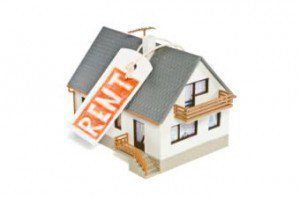 When it comes to eviction moratoria and other COVID-19 relief efforts, the focus often is on renters' hardships. A new study concentrates on struggling landlords who derive a large portion of their income from their tenants.
When it comes to eviction moratoria and other COVID-19 relief efforts, the focus often is on renters' hardships. A new study concentrates on struggling landlords who derive a large portion of their income from their tenants.
About a third of independent owners of single-family rental properties are from low- to moderate-income households (those with incomes of less than $90,000 a year), according to researchers at the Hamilton Project, an economic policy arm of the Brookings Institution.
Hamilton's recently released report showed that such "mom-and-pop" landlords are in a worse financial position relative to their higher-earning peers.
"To better understand the economic circumstances of landlords," the Hamilton Project reported data from the 2016 Survey of Consumer Finances. It studied households that own at least one residential investment property and receive income from that property.
Based on its study, the Hamilton Project determined that "not only do tenants face great economic risk in the COVID-19 recession ... [lower-income] landlords—who may be coping with their own unemployment or additional expenses related to the COVID-19 pandemic—will also struggle to pay their mortgages, utilities bills, property taxes, maintenance costs, and other property-related expenses. Relative to larger, corporate landlords, mom and pop landlords likely have fewer resources to withstand long delays or significant reductions in rental income."
When renters cannot pay rent, and are not required to in order to stay in their homes (under the eviction moratorium) it creates "a significant income shock for smaller landlords of modest means."
For many of these “mom and pop” landlords, property-related expenses can consume more than half of their property income, the study noted.
Analysis found that, specifically, 40% of residential property units are owned by individual investor landlords.
Among those owning residential investment property, property income constitutes up to 20% of the total household income for about a third of them.
"Without rental assistance, tenants and smaller landlords alike will continue to struggle to make ends meet."
The study further showed that the moratorium and other renter-assistance will have less of an impact on higher-income landlords. For example, property income only represents 5% of total household income for landlord households earning over $200,000.
In conclusion, the Hamilton Project recommends the following:
"Emergency rental assistance resources should prioritize those facing the most severe housing insecurity, including those at high risk of homelessness. Supplementing the moratorium policy with federal rental assistance (detailed needs reported by Urban Institute) is critical to protect the long-term housing of tenants—and smaller landlords, too."

 DSNews The homepage of the servicing industry
DSNews The homepage of the servicing industry









